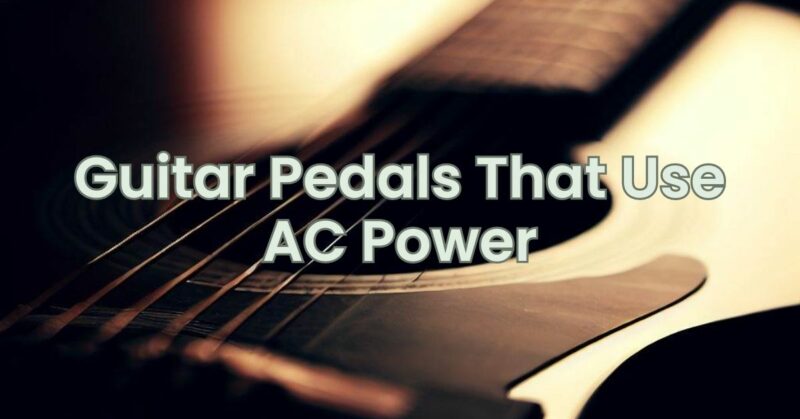Guitar pedals are essential tools for guitarists, allowing them to shape their tone and create unique sounds. While many pedals are powered by batteries or external power supplies, there are also pedals that use AC power directly from a wall outlet. In this article, we will explore the world of guitar pedals that use AC power and discuss their advantages, considerations, and popular examples.
Advantages of AC-Powered Pedals:
- Reliable Power: AC-powered pedals eliminate the need for batteries or external power supplies, providing a consistent and reliable power source. This ensures that the pedal operates at optimal performance without worrying about battery life or power fluctuations.
- Cost Efficiency: Using AC power can be more cost-effective in the long run, especially for pedals that are frequently used or require high power consumption. Instead of constantly replacing batteries or purchasing external power supplies, an AC-powered pedal only requires a one-time investment in a power cable.
- Environmentally Friendly: AC-powered pedals contribute to a more sustainable approach, as they eliminate the need for disposable batteries. By reducing battery waste, guitarists can make a positive impact on the environment.
Considerations for AC-Powered Pedals:
- Power Requirements: AC-powered pedals typically require a specific voltage and current rating. It is crucial to check the pedal’s power requirements before connecting it to a power outlet. Using incorrect power specifications can lead to damage or malfunctioning of the pedal.
- Power Adapters: AC-powered pedals often come with their dedicated power adapters. These adapters convert the AC power from the wall outlet to the required voltage and current for the pedal. It is essential to use the provided power adapter or a compatible one to ensure safe and proper operation.
- Power Surge Protection: Since AC-powered pedals directly connect to the electrical grid, it is advisable to use surge protectors or power conditioners to safeguard against power surges or fluctuations. This helps protect the pedal from potential damage caused by electrical issues.
Popular AC-Powered Pedals:
- Electro-Harmonix Big Muff Pi: This iconic distortion pedal is available in AC-powered versions, providing players with a rich and sustain-filled tone.
- Fulltone OCD: The Fulltone OCD is a versatile overdrive pedal known for its dynamic response and harmonically rich sound. It is available in both AC-powered and battery-powered versions.
- Line 6 DL4 Delay Modeler: The Line 6 DL4 is a popular delay pedal that offers various delay effects. It can be powered by either batteries or AC power, providing flexibility for different performance situations.
- Dunlop Cry Baby Wah: The Dunlop Cry Baby Wah pedal is a classic effect used by many guitarists. It comes in AC-powered versions, offering a consistent and reliable power source for expressive wah sounds.
Conclusion:
AC-powered guitar pedals offer a range of advantages, including reliable power, cost efficiency, and environmental sustainability. Guitarists should consider the power requirements, use proper power adapters, and protect against power surges when using AC-powered pedals. Several popular pedals, such as the Electro-Harmonix Big Muff Pi, Fulltone OCD, Line 6 DL4, and Dunlop Cry Baby Wah, are available in AC-powered versions. By understanding the benefits and considerations of AC-powered pedals, guitarists can make informed decisions when building their pedalboard setups.


